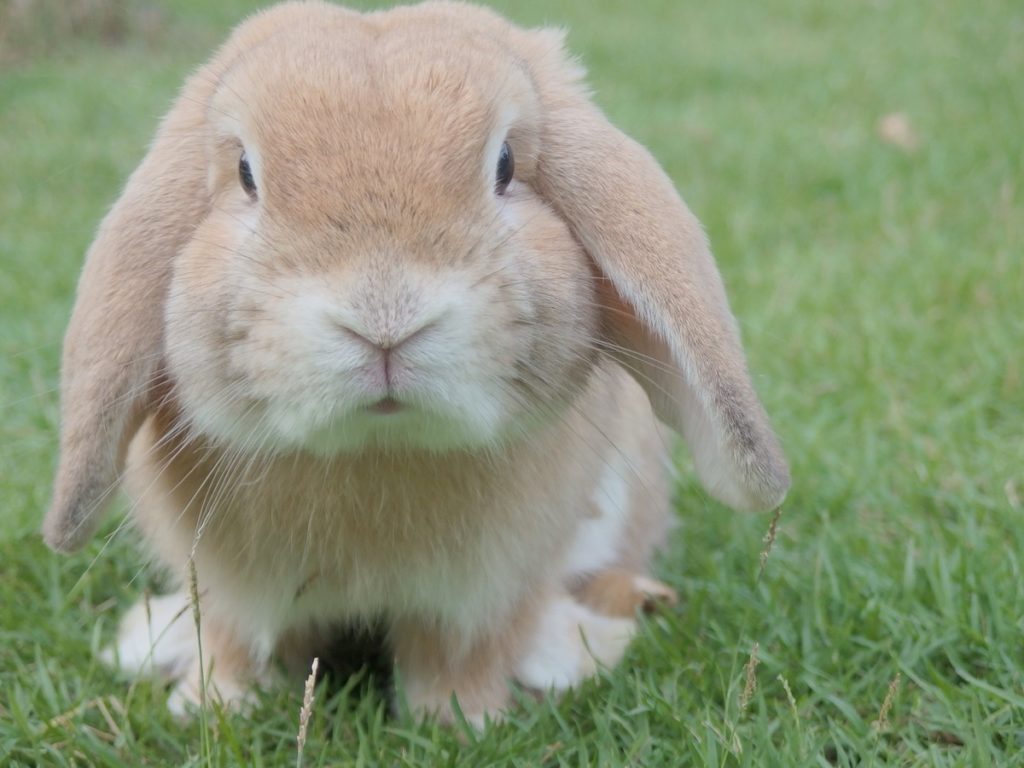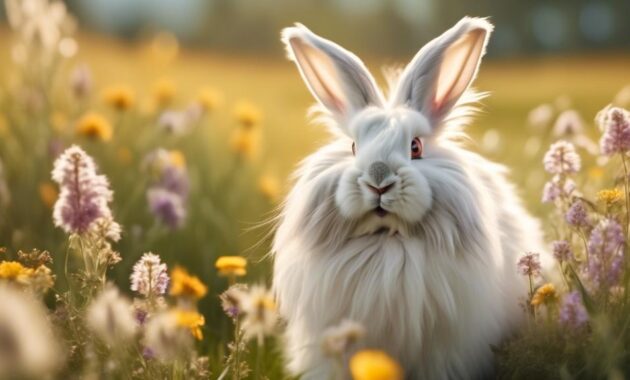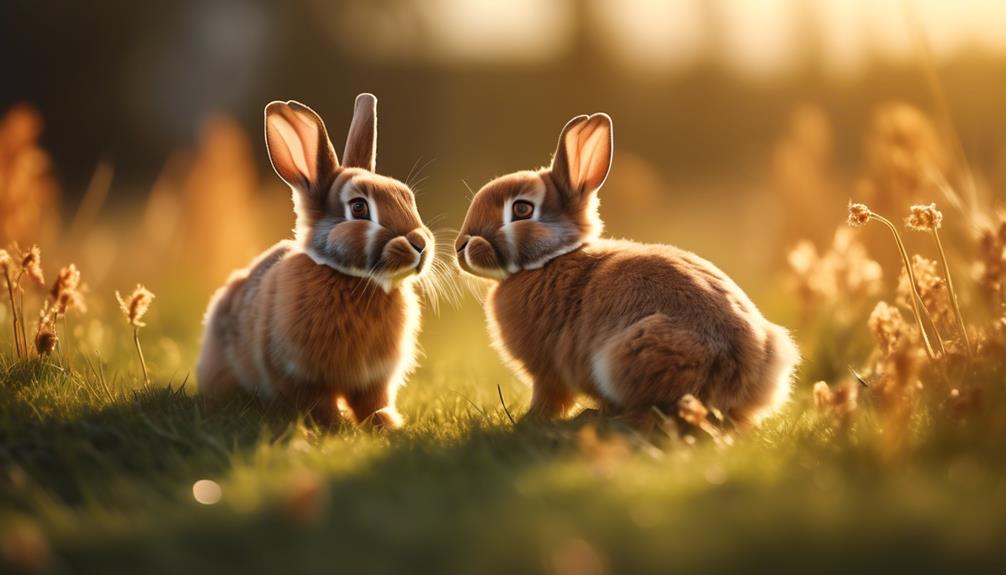
Like a burst of energy in a tranquil garden, American Sable Rabbits captivate and enchant with their lively presence. These charming creatures, with their soft sepia coats and inquisitive nature, are a breed that holds countless surprises and delights.
But what makes them truly special? What sets them apart from other rabbits? The answer lies in their energetic charm, a quality that promises to captivate and inspire owners of all ages.
So, step into the world of American Sable Rabbits and prepare to be amazed by their boundless energy and irresistible allure.
Key Takeaways
- American Sable rabbits are sweet, active, and playful pets that are suitable for various types of owners, including singles, families with children, and seniors.
- They have a commercial-sized body weighing 8-10 lbs and a soft, fine, dense coat that requires regular grooming.
- American Sable rabbits were developed in California by crossbreeding Chinchilla rabbits with other breeds and have a distinct color pattern of dark sepia fading to lighter tan.
- Care requirements include a diet mainly consisting of hay, regular teeth and ear checks, appropriate enclosure and bedding, and spaying/neutering for a longer lifespan.
General Information
American Sable rabbits are a popular choice for a variety of owners due to their sweet temperament and energetic nature. Weighing between 8-10 pounds, these rabbits have a lifespan of 5-8 years. With a commercial body shape, they’re well-suited for singles, seniors, families with children, and first-time owners. Their sweet and playful temperament makes them great indoor or outdoor pets.
American Sable rabbits were developed by Otto Brock in California in the early 20th century through crossbreeding with Chinchilla rabbits. The American Sable Rabbit Association was founded in 1929 and the breed was accepted by the American Rabbit Breeders Association in 1931.
These rabbits have a soft, fine, dense coat that requires regular grooming. Their coloration consists of dark sepia on the head, feet, ears, back, and top of the tail, fading to a lighter tan.
Breed History/Origin
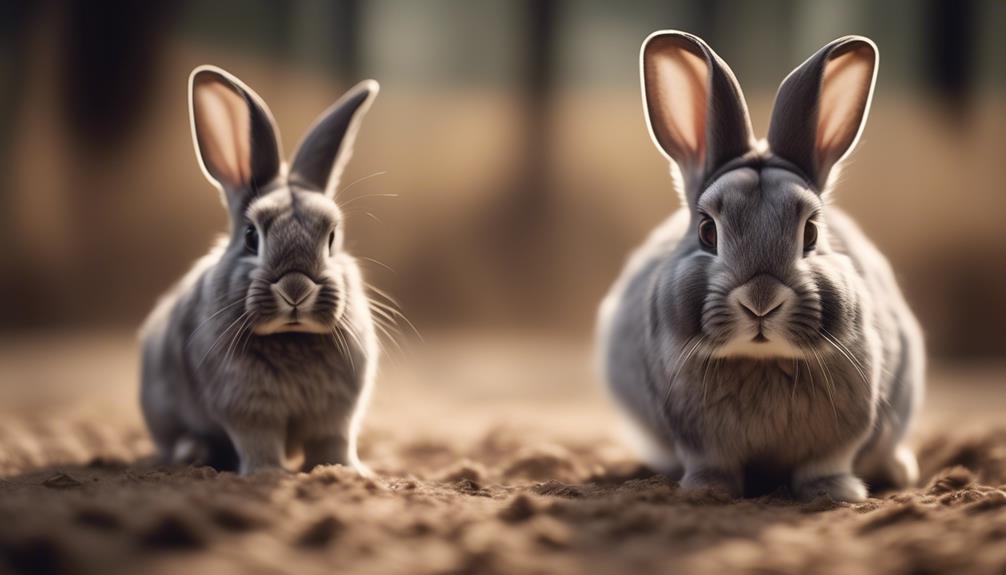
Otto Brock of California developed the American Sable rabbit breed in the early 20th century through crossbreeding with Chinchilla rabbits. This crossbreeding resulted in a rabbit with a soft, fine, and dense coat that requires regular grooming.
The American Sable Rabbit Association was founded in 1929 to promote and preserve the breed. The breed was accepted by the American Rabbit Breeders Association (ARBA) in 1931.
American Sable rabbits have a commercial-sized body, weighing between 8-10 pounds. They’ve a rounded head with vertical, upright ears. The breed is known for its distinctive coloration, with a dark sepia coat on the head, feet, ears, back, and top of the tail, fading to a lighter tan.
American Sable rabbits make charming and energetic pets for singles, couples, families with children, and seniors, and can thrive in both apartments and homes with or without backyards.
Description
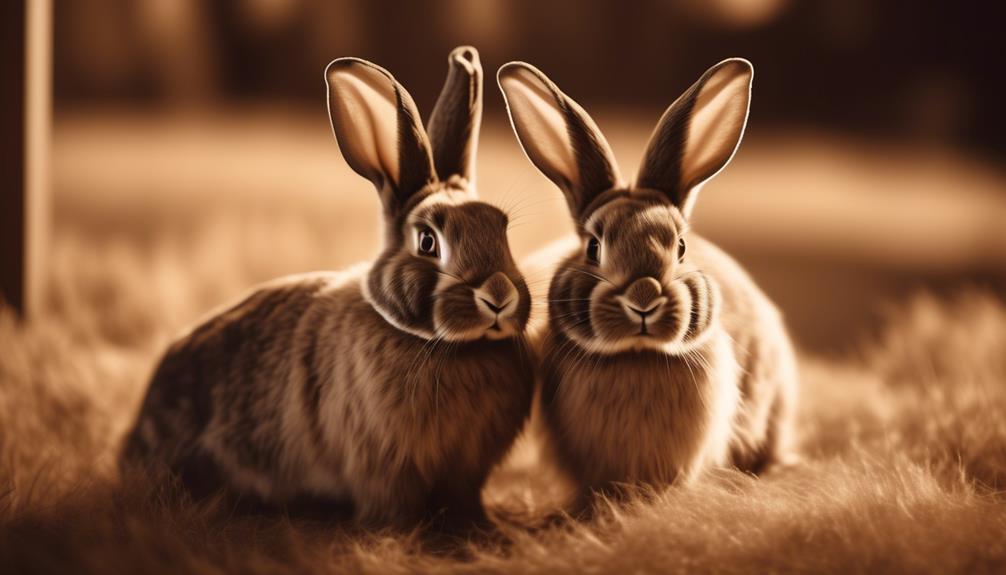
The American Sable rabbit breed is known for its distinct physical characteristics. These rabbits have a commercial-sized body, weighing between 8-10 lbs. They’ve rounded heads with vertical, upright ears.
The American Sable rabbits sport a soft, fine, and dense coat that requires regular grooming. They’re known for their unique coloration, with a dark sepia color on their head, feet, ears, back, and top of the tail, fading to a lighter tan.
These rabbits enjoy gentle petting on their back and between their ears. With their energetic nature, they thrive on running and playing.
American Sable rabbits are suitable for singles, couples, families with children, and seniors. They can adapt to both apartments and homes with or without backyards.
Care Requirements
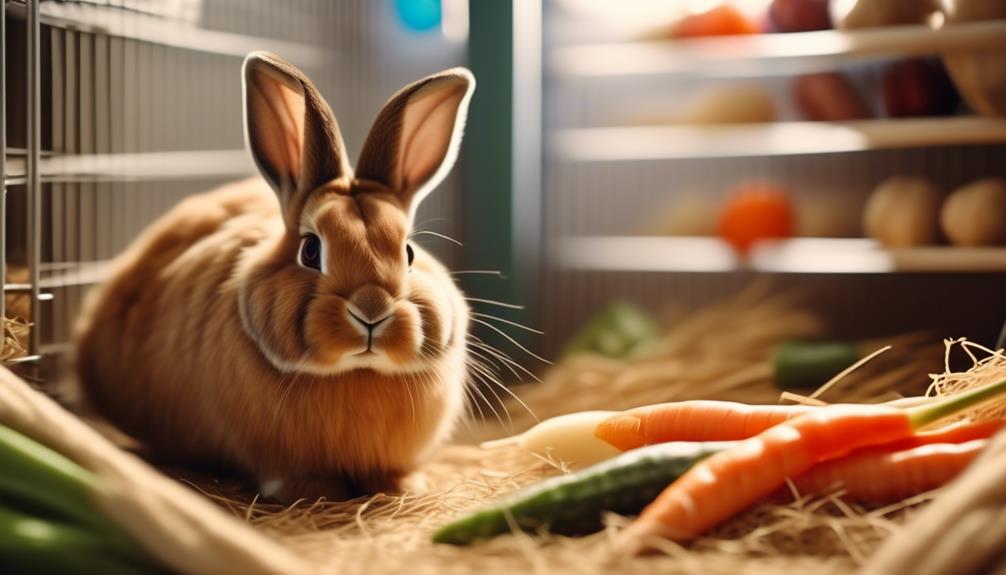
To properly care for American Sable rabbits, owners should ensure they have a well-balanced diet and an appropriate living environment. Here are three essential care requirements for these energetic rabbits:
- Diet: American Sable rabbits require a diet that consists mainly of hay (70 percent), along with pellets, leafy greens, fruits, and vegetables. It’s important to avoid high-sugar fruits and iceberg lettuce to maintain their health.
- Living Environment: Provide an appropriate enclosure for the rabbits, whether indoors or outdoors, with proper bedding and a regular cleaning routine. This will ensure a comfortable and hygienic living space for them.
- Health Maintenance: Regularly check for overgrown teeth and ear mites, as these can be common issues in American Sable rabbits. Additionally, spaying does and neutering bucks can contribute to their overall well-being and longer lifespan.
Diet

American Sable rabbits have specific dietary needs that should be met for their overall health and well-being. Their diet consists mainly of hay, which should make up 70 percent of their food intake. In addition to hay, they should also be fed pellets, leafy greens, fruits, and vegetables. However, it is important to avoid high-sugar fruits and iceberg lettuce. To provide a deeper understanding of their dietary requirements, here is a table outlining the recommended daily food portions for American Sable rabbits:
| Food | Portion Size |
|---|---|
| Hay | 70% of their daily food intake |
| Pellets | 1/4 cup per day |
| Leafy greens | 1 cup per day |
| Fruits | Limited to 1-2 tablespoons |
| Vegetables | Limited to 1-2 tablespoons |
Enclosure and Bedding
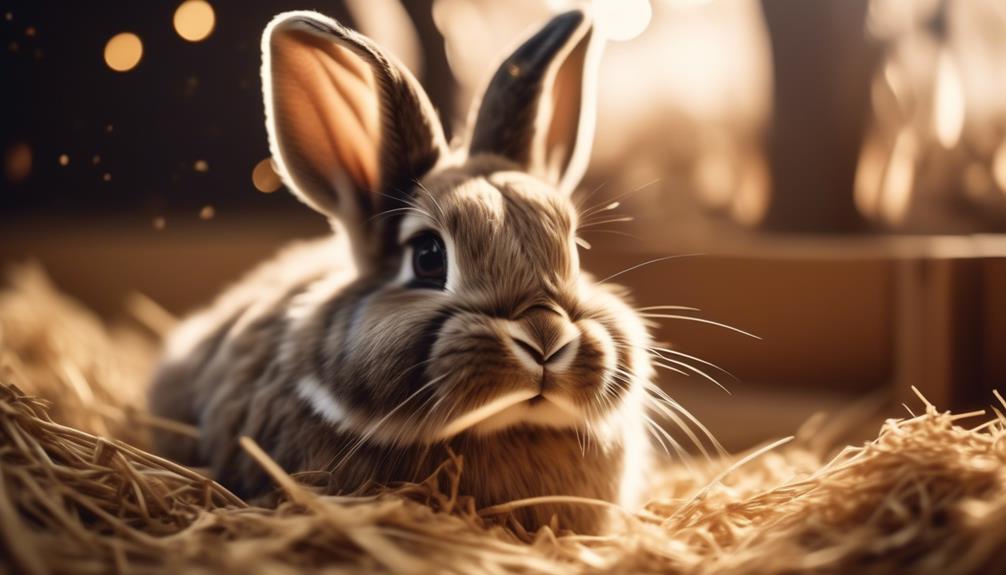
After ensuring that American Sable rabbits have a well-balanced diet, it’s important to provide them with an appropriate enclosure and bedding.
Here are three key factors to consider when setting up their living space:
- Size: American Sable rabbits are medium-sized, weighing between 8-10 pounds. They need enough room to hop, stretch, and play. A minimum of 12 square feet of space is recommended, but the more, the better.
- Security: Rabbits are curious and can be prone to escaping. Ensure that the enclosure has sturdy walls and a secure door to prevent any accidental escapes. Also, check for any potential hazards or chewable items within their reach.
- Bedding: Provide a comfortable and absorbent bedding material for their living area. Options such as straw, hay, or wood shavings work well. Avoid using cedar or pine bedding as they can be harmful to rabbits’ respiratory systems.
Health and Wellness
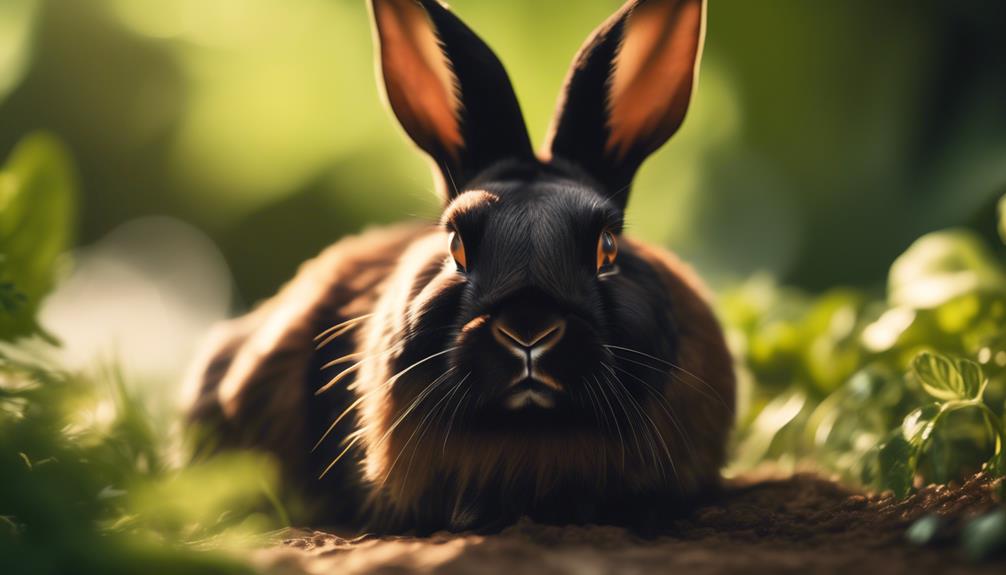
Maintaining the health and wellness of American Sable rabbits is crucial for their overall well-being. To ensure their optimal condition, it is important to focus on their diet, regular check-ups, and exercise.
| Diet | Regular Check-ups | Exercise |
|---|---|---|
| – Hay (70 percent) | – Overgrown teeth check | – Running and playing |
| – Pellets, leafy greens, fruits, and vegetables | – Ear mites inspection | – Provide toys for mental stimulation and chewing |
| – Avoid high-sugar fruits and iceberg lettuce | – Spaying does and neutering bucks | |
A diet consisting mainly of hay, along with pellets, leafy greens, fruits, and vegetables, is essential for their nutritional needs. Regular check-ups should include inspecting for overgrown teeth and ear mites, which are common issues among rabbits. Spaying does and neutering bucks can also contribute to a longer lifespan. Lastly, to keep them active and happy, provide opportunities for running, playing, and mental stimulation with toys. By following these guidelines, American Sable rabbits can thrive in terms of their health and well-being.
Grooming
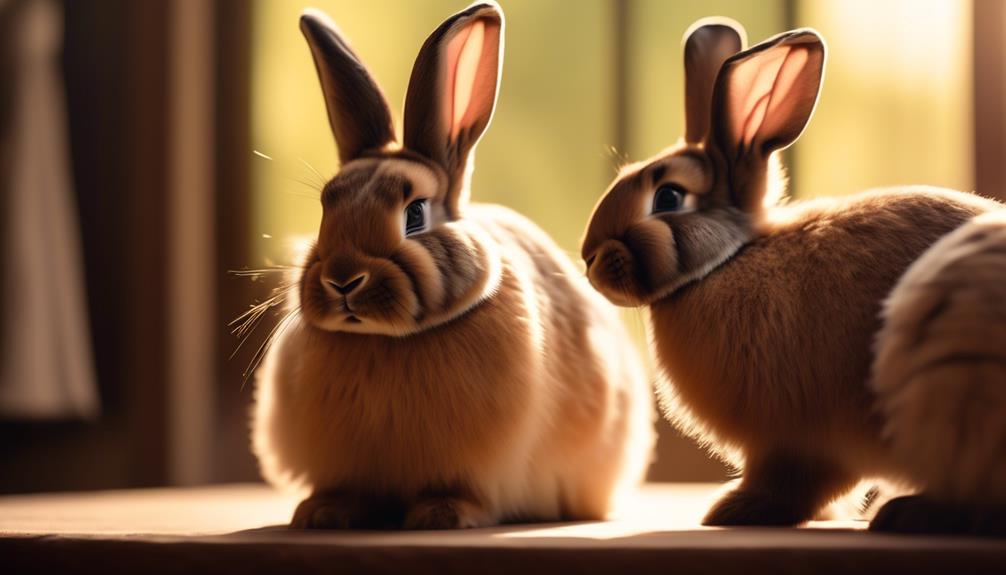
Regular grooming is essential for the well-being and appearance of American Sable rabbits. Here are three important aspects of grooming to keep in mind:
- Brushing: American Sable rabbits have a soft, fine, and dense coat that requires regular brushing to prevent matting and remove loose fur. Brushing also helps distribute natural oils, keeping their coat healthy and shiny.
- Nail Trimming: It’s crucial to trim your rabbit’s nails regularly to prevent overgrowth and discomfort. Long nails can cause pain and difficulty in walking. Use a small animal nail trimmer to carefully trim the nails, taking care not to cut into the quick.
- Ear Cleaning: American Sable rabbits have upright ears that can accumulate dirt and debris. Regularly check and clean their ears using a soft, damp cloth or cotton ball. Gently wipe the outer surface of the ears, avoiding the ear canal.
Temperament and Behavior
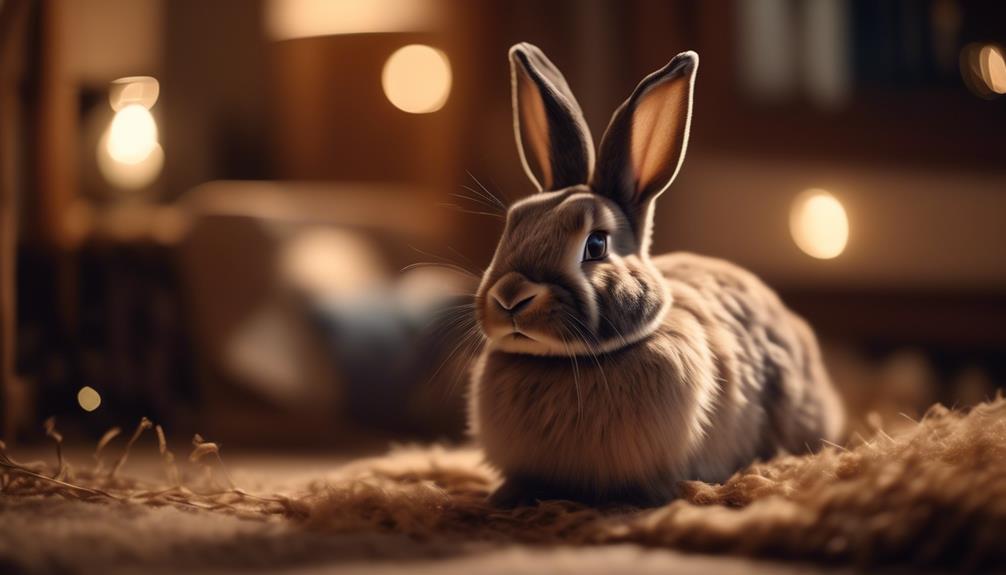
Moving on to their temperament and behavior, American Sable rabbits are known for their energetic and playful nature. They enjoy running and playing, making them a great choice for singles, couples, families with children, and even seniors. Whether living in an apartment or a home with or without a backyard, these rabbits will thrive with the right care and attention.
To keep them mentally stimulated, provide toys for them to play with and chew on. Litter training may require multiple litter boxes throughout the house to ensure cleanliness.
Suitable Living Environments
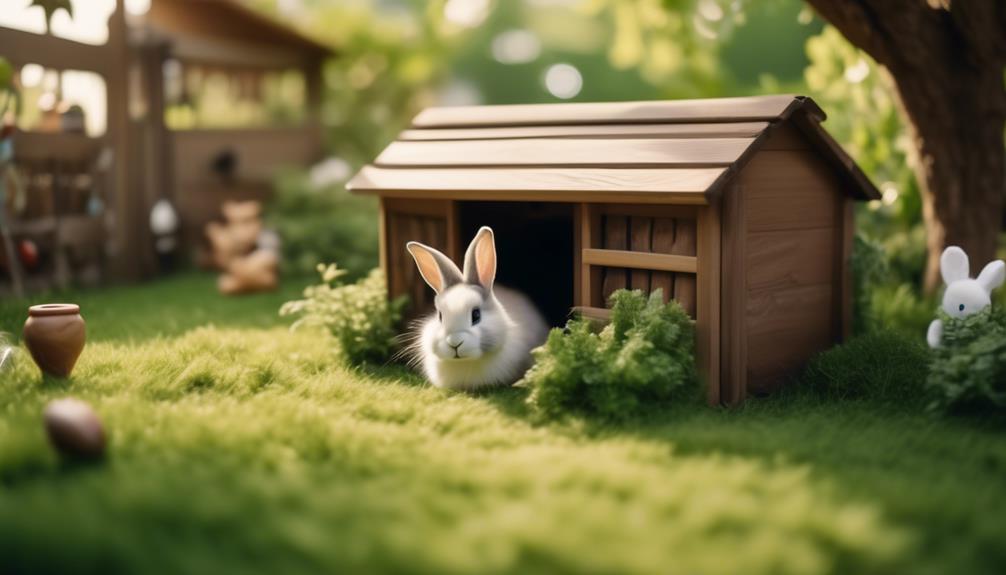
American Sable rabbits thrive in a variety of living environments, making them adaptable pets for both indoor and outdoor settings. Whether you live in an apartment or a home with a backyard, these rabbits can easily adjust to their surroundings.
Here are three key factors to consider when creating a suitable living environment for your American Sable rabbit:
- Enclosure: Provide an appropriate enclosure that offers enough space for the rabbit to move around comfortably. Indoor rabbits may require a large cage or a designated area with proper bedding, while outdoor rabbits should have a secure hutch or pen to protect them from predators.
- Bedding and Cleaning Routine: Use suitable bedding material, such as hay or wood shavings, and establish a regular cleaning routine to maintain a clean and hygienic living space for your rabbit.
- Safety and Enrichment: Ensure that the living environment is safe and free from hazards. Provide toys, tunnels, and hiding spots to keep your rabbit mentally stimulated and satisfied.
Mental Stimulation and Training
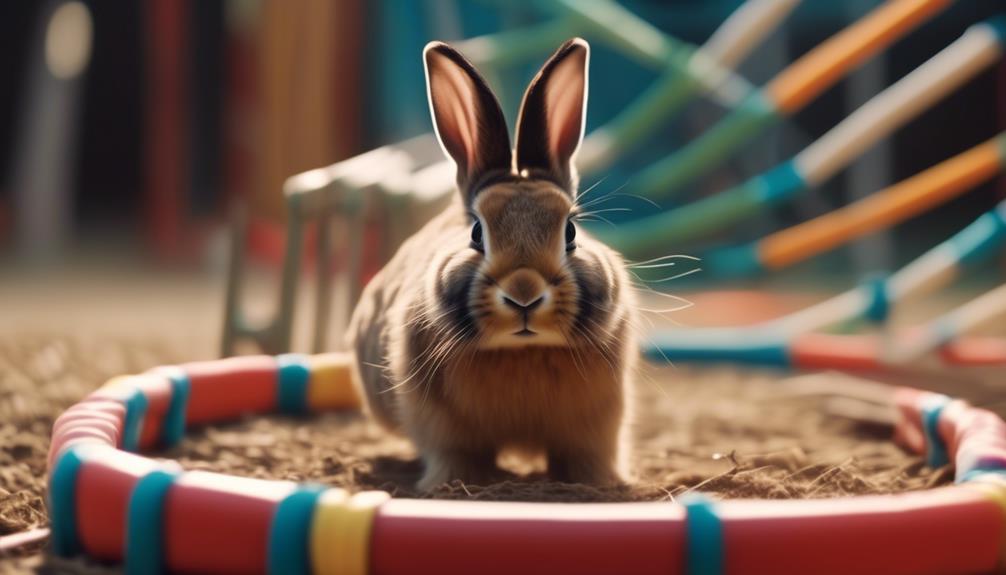
After creating a suitable living environment for your American Sable rabbit, it is important to focus on their mental stimulation and training. These energetic rabbits thrive on mental challenges and require mental stimulation to prevent boredom and destructive behavior. One effective way to provide mental stimulation is through training. American Sable rabbits are highly intelligent and can be trained to perform tricks and use litter boxes. Training not only provides mental stimulation but also strengthens the bond between the rabbit and its owner. To help you get started, here is a table with some training tips:
| Training Tips | Benefits |
|---|---|
| Use positive reinforcement | Builds trust and confidence |
| Be patient and consistent | Ensures successful training |
| Start with simple commands | Establishes a foundation for more advanced tricks |
Frequently Asked Questions
Are American Sable Rabbits Good With Other Pets in the Household?
American Sable rabbits can be good with other pets in the household, but proper introductions and supervision are important. Each animal’s temperament and compatibility should be considered, and gradual introductions should be done to ensure harmony.
Can American Sable Rabbits Be Trained to Do Tricks?
Yes, American Sable rabbits can be trained to do tricks. With patience and positive reinforcement, they can learn to respond to commands and perform simple tricks like hopping through hoops or jumping on command.
What Are Some Common Health Issues That American Sable Rabbits May Face?
American Sable rabbits may face common health issues such as overgrown teeth and ear mites. Spaying does and neutering bucks can help to promote a longer lifespan for these energetic and charming rabbits.
How Often Should I Groom My American Sable Rabbit?
They should groom their American Sable rabbit regularly to maintain their soft, fine, dense coat. Grooming can be done every 1-2 weeks, including brushing, nail trimming, and checking for any signs of mites or dental issues.
Are American Sable Rabbits Prone to Digging or Chewing on Furniture?
Yes, American Sable rabbits are prone to digging and chewing on furniture. It’s important to provide them with appropriate toys and mental stimulation to redirect their natural behaviors and prevent damage to your furniture.
Are American Sable Rabbits and Cinnamon Rabbits Similar in Energetic Charm and Personality?
Yes, the American Sable Rabbits and Cinnamon Rabbits are similar in their energetic charm and personality. Both breeds are known for their playful and curious nature, making them a delightful addition to the enchanting world of rabbits. They are social and affectionate, making them excellent companions for rabbit lovers.
Conclusion
In conclusion, the American Sable Rabbit is a delightful and energetic breed that brings joy to any household. With their playful personality and sweet temperament, they make great companions for individuals, seniors, and families with children.
From their stunning dark sepia coloring to their soft and dense coat, these rabbits are truly a sight to behold. With proper care, grooming, and a suitable living environment, owning an American Sable Rabbit can bring endless happiness and charm into your life.

